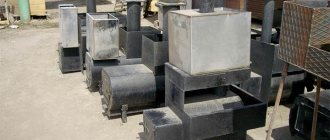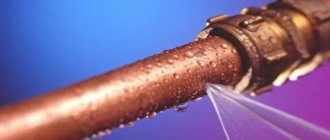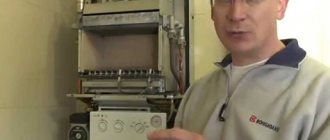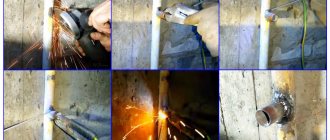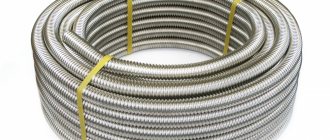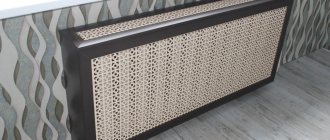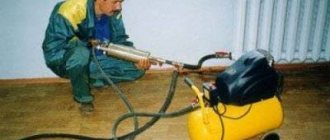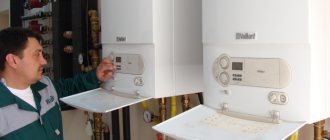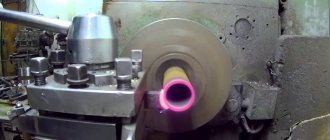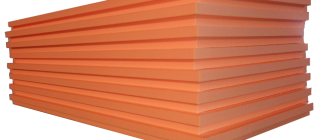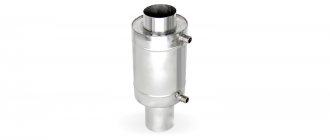Each qualified specialist has to solve a number of complex problems when carrying out welding work. One of the problems that any welder may encounter is how to weld a pipe with water.
It is worth noting that welding a steel pipe with water flowing through it is not a technically competent solution or a technologically correct work process. However, in some emergency situations, knowledge of various methods of welding pipelines with water flowing freely or under pressure can greatly help a specialist.
Rice. 1 Electric arc welding technology
Selecting Electrodes
The preparatory stage includes the selection of the most suitable electrode. The quality of this consumable material determines the tightness of the resulting system, as well as the complexity of welding. Today, electrodes are used, which are represented by a conductive rod with a special coating. Through the use of a special composition, the arc is stabilized and a more attractive, high-quality weld is formed. Additionally, in some cases, the included chemicals reduce the likelihood of metal oxidation.
There are quite a large number of different versions of such consumables on sale. According to the type of core there are:
- With a core that does not melt. In their production, graphite or tungsten, as well as electrical coal, are used.
- With a melting rod. In this case, wire is used in manufacturing, the thickness of which can vary over a wide range. When carrying out electric welding, the thickness of the electrode is the most important parameter that needs to be taken into account.
Consumable Rod Electrodes
Classification is also carried out according to what substance is used as a coating. The most widely used versions are:
- Rutile acid is often used to create a heating pipeline system or supply water for domestic purposes. During electric welding, slag can form, which is not difficult to remove.
- Cellulose ones are more suitable for working with products that have a large cross-section. An example is the case of manufacturing a pipeline for supplying gas and water.
- Rutile is used when you need to get a neat seam. Removing slag from the surface is simple and quick. In addition, it is suitable for welding a second or subsequent seam.
- Rutile-cellulose is suitable for welding in almost any plane. This point determines their frequent use when creating a long vertical seam.
- The main coating is considered a universal coating that is suitable for electric welding of a wide variety of parts, including thick-walled products. The resulting fastener is characterized by plasticity and high strength.
Rutile electrodes
It is recommended to pay attention to products from well-known manufacturers, whose declared performance characteristics will correspond to real ones. In addition, when choosing consumables, you need to pay attention to the shelf life of the product.
Where to start the preparatory stage?
The first thing those who want to learn how to cook need to do is purchase the necessary equipment . The complete kit that will be required to complete such work will include:
- welding machine;
- set of electrodes;
- hammer for beating off slag;
- brush.
When choosing an electrode, you need to pay attention to its diameter, which will be determined by the thickness of the metal sheet being welded . You should also take care of protection. For welding we need:
- welding mask with a special light filter;
- thick clothes with long sleeves;
- gloves, preferably made of suede.
The tools required for welding work must include a welding rectifier, transformer or inverter. It is with the help of these devices that the problem of converting alternating current into direct current will be solved, which will allow welding.
Types of welding joints
Welding work can only be carried out if you take into account exactly what welding seams can be found. The most widespread are:
- Placing and butt welding of parts. In this case, the products should be placed next to each other.
- A T-joint is characterized by the fact that the products are located at right angles to each other.
- The overlap fastening method has become more widespread due to the ease of welding and quality control of the resulting joint.
As a rule, in the case under consideration, the electric butt welding method is used. This ensures a high-quality connection of individual elements.
Core Technology
The most common and popular technique is electric arc welding.
Yes, it has alternatives in the form of gas welding, but its undeniable advantages lie in simplicity, a minimal set of equipment and a result that meets the most stringent standards.
Even when designing main pipelines, this method is used. To achieve high quality, you must treat your work with full responsibility.
Preparing parts
Before carrying out electric welding, the parts to be joined should be prepared. The recommendations are as follows:
- The evenness of the cut is checked, which should be 90 degrees.
- The end and surrounding surface are cleaned with sandpaper and other abrasive until a metallic sheen appears.
- All types of contaminants must be completely removed.
Preparation for welding, cleaning with a grinder
At the time of welding, all elements must be firmly fixed.
How to use gas welding (video)
Using gas welding to replace batteries in an apartment building is the most acceptable and reliable method. The seams at the joints allow them to withstand strong pressure and prevent damage to the integrity and tightness of the heating system.
Replacing heating batteries with gas welding (from 4 pcs)
4000 RUR
Replacement of heating batteries with gas welding (from 2 pcs.)
4500
Replacement of heating batteries with gas welding (1 pc.)
5000 RUR.
Estimating
0 rub.
Today, a wide variety of materials are freely available, and on the Internet you can find any instructions and, of course, try to replace heating devices yourself
But can you then be sure of the reliability of the result of your work? After all, it is not enough to select high-quality materials; it is important to thoroughly follow the process technology. Otherwise, you can be left without precious heat at the most inopportune moment - for example, in the midst of winter frosts. So, it is obvious that installing radiators using gas welding is a process that requires an exclusively qualified approach
And, having become more familiar with the technology, you can easily verify this
So, it is obvious that installing radiators using gas welding is a process that requires an exclusively qualified approach. And, having become more familiar with the technology, you can easily verify this.
Replacing heating batteries with gas welding: the essence of the process
It is equally important to choose the right special equipment for welding work. You will need to purchase a generator (acetylene or some other gas), as well as an oxygen cylinder and gas reducers. And, of course, the welding device itself
It can be a torch or a cutter with a set of replaceable tips. The mandatory list of equipment also includes: a rubber hose, which is necessary to transfer gas to the tool from cylinders, a fire-preventing valve
And, of course, the welding device itself. It can be a torch or a cutter with a set of replaceable tips. The mandatory list of equipment also includes: a rubber hose, which is necessary to transfer gas to the tool from cylinders, and a fire-preventing valve.
Replacing heating batteries with gas welding requires that you achieve strong connections, which means that you need to approach the installation of equipment and the choice of welding method as responsibly as possible. You can choose from several existing types of connections, the most popular of which is butt. But if the material used has a thickness of more than 5 mm, then you will already have to choose a Y- or X-shaped edge groove. The most profitable and economical methods of cutting pipes are oxygen, manual and mechanized.
As you already understand, replacing heating radiators with gas welding is a process that requires preliminary study in theory and then consolidation in practice. But few people, of course, want to train on a real object.
If you contact us for help, you will be able to consult on all your questions, as well as receive information on the approximate cost of replacing heating radiators.
The final estimate can be drawn up by a specialist who will conduct a final assessment of the property in person. And then you will only need to prepare the room for the start of work. To do this, it is better to remove excess furniture, cover floor coverings and protect interior details.
Our specialists will do the rest: deliver materials and equipment, agree on draining the central heating risers, and perform pressure testing of the system.
If desired, you can also order the transfer of radiators and risers to a more convenient location, as well as organize the installation of a boiler in a private house for an autonomous heating solution.
Our company is also distinguished by an individual approach to each client. You will be kept informed of each stage of installation, and your wishes will be taken into account when choosing materials for replacing heating batteries with gas welding. Our specialists are ready to answer every question you have, and the final result will be an effective and reliable solution for heating your home.
Pipe welding
A fairly common question is how to weld pipes using electric welding. Inverters and other devices are characterized by ease of use, as well as the ability to accurately adjust output parameters. Welding of metal pipes is carried out taking into account the information below:
- The joint must be continuous.
- Once you start welding, you don't need to stop.
- All work must be carried out in several layers, thereby ensuring tightness. The number of seams depends on the thickness of the walls.
When considering how to weld pipes, you need to pay attention to the fact that each previous layer must cool completely.
Welding of pipes using electric welding should be carried out with control of the resulting fastening. In addition, the weld on the pipe is promptly cleaned of slag and other contaminants.
Fistula removal
How to weld a water pipe using electric welding with the maximum degree of reliability? The exact instructions depend on the nature of the damage. Let's start with how to eliminate a fistula in a water pipe, that is, a round hole from which liquid oozes.
In this case, you need to take a position that allows you to clearly observe the boundaries of the damage, and the electrodes are held perpendicular to the base to minimize the volume of water falling on them. Work is carried out from top to bottom until the hole is completely hidden by the deposited metal.
The procedure is as follows:
- metal is fused to the upper part of the fistula;
- 2 blows are made with a hammer immediately after the arc goes out. This promotes compaction of the material and eliminates pore formation;
- the cycle repeats from top to bottom;
- if there is thinning of the walls along the edges of the hole, they are strengthened using the method described above;
- when steam stops oozing out, the pipe wall becomes stronger. The current is set to a minimum to prevent through burning. The required volume of material is gradually deposited;
- To increase strength, the formed seam is tapped.
Process Features
The process under consideration has a fairly large number of features. When welding pipes, the following information is taken into account:
- The polarity of the current is selected depending on the wall thickness, type of material and the selected electrode. It is worth considering that all information about the parameters under which the electrode should be used is indicated by the manufacturer.
- It is worth considering that the connection of pipes is also carried out taking into account the current strength. This indicator can be determined by multiplying the thickness of the rod by 30 or 40. The current strength that is installed on the device is determined in a similar way.
- The speed of welding is not regulated in any technical documentation. However, you should not keep the electrode in one place for a long time, as this can lead to smudges. In addition, too high a temperature can lead to burning of the edge.
In order to simplify the task, preliminary fastening of the elements to be connected is carried out. Such welding features must be taken into account in order to improve the quality of the connection.
Basics of electric arc welding
To get the best possible results when creating a weld, novice welders first need to familiarize themselves with the lessons, which pay attention to the correct execution of this work in the first stages.
It is also advisable to get practice in performing welding work under the guidance of an experienced specialist, who will not only point out mistakes, but also tell you how to avoid them in the future. Before you start welding parts, you need to make sure that it is securely fixed enough. It is equally important to take care of compliance with fire safety rules: for this it would be useful to place a bucket of water nearby. This also explains the ban on welding on a wooden base. You should also pay attention to small remnants of used electrodes , which should not be left at the workplace after completion of work. Without this, it is impossible to learn how to weld metal correctly.
It is imperative to make sure that the “ground clamp” is securely fixed. Make sure that the cable is insulated and accurately inserted into the special holder. Before working with a welding inverter, you should select a calculated current power indicator, which should be determined based on the diameter of the electrode. After this, you can strike the arc . This is done as follows: you need to place the electrode at an angle of about 60 degrees relative to the product. Next, you need to slowly move it across the surface. At this moment sparks appear, now you need to touch the metal with the electrode and then lift it, but not higher than 5 mm.
If all recommendations are strictly followed, the arc should light. Until the welding is completed, you need to keep the electrode at a distance of 5 mm. It should be borne in mind that during metal welding, the electrode rod will gradually begin to burn out.
Therefore, at regular intervals you need to reduce the distance between it and the metal. Approach the electrode to the workpiece slowly. A situation may arise where it sticks. In this case, you need to slightly turn it to the side . If all attempts fail to ignite the arc, then you can try increasing the current.
When the arc ignites and its flame becomes stable, you can begin fusing the bead. The electrode with the other one lit must be slowly and smoothly moved horizontally, making gentle oscillatory movements. This will cause the liquid metal to begin to move on its own directly to the center of the arc. If you follow all the recommendations, you can make a reliable seam formed in the form of small waves that were created using deposited metal.
A situation may arise that during welding of products the electrode will be completely used up, but at the same time it will not be enough to create the entire seam.
In this case, you need to take a break from work. After turning off the machine, you need to insert a new electrode , remove slag from the surface of the weld, and then continue welding. From the depression created at the end of the seam, often called a crater, you need to make an indent of about 12 mm and light the arc. The electrode should be brought closer so that upon contact an alloy is formed from the metal of the old and newly installed electrode. Next, welding is performed as usual.
Assembling joints
Pre-assembly of joints greatly simplifies the task. The features of this stage are as follows:
- The pipes are fixed in clamps. If the fastening is carried out at three points, the fixation will be more reliable.
- If there is only one connection point, it is recommended to start welding from the reverse side.
- If the walls are about 3 mm thick, then the thickness of the rod should be 2.5 mm.
The most difficulties arise with welding pipes that cannot be secured in a vice.
Fiberboard or MDF?
For a final definition of what MDF is and how it differs from fiberboard, a description of the production technology is sufficient. Fiberboard, known as hardboard, stands for fibreboard, produced by wet pressing of wood dust. Manufacturing technology does not allow fiberboard to be thick. The common thickness of fiberboard is 3.2 mm. The thickness of the MDF board can exceed 20 mm.
When making shaped and bent products from MD semi-finished products, the thickness is determined by the dimensions of the part. Fiberboard serves as a furniture element in the form of a back wall or bottom of pull-out shelves of cabinet furniture. Fiberboard is fastened without pre-drilling holes. To fasten MDF boards, dowels or hardware are often used, for which it is necessary to prepare a hole by drilling. The thickness of the slab allows surface milling. Wood glue is excellent for gluing.
Welding rotary and non-rotary joints
Pipe welding technology changes slightly if you need to connect joints of this type. The features are as follows:
- Cooking is carried out using a special rotator, for which the required speed is set.
- Care is taken to ensure that the weld pool is positioned correctly.
Grooving edges for butt joints
Similar work can be done with the usual workpiece fastening, the pipe is rotated approximately 90 degrees. The most difficult thing to cook is when turning the workpiece 180 degrees.
Need for work
Welding a pipe with water may be required in the following cases:
- Leaks formed as a result of exceeding standard loads or poor-quality installation work. Disconnection in such cases is not welcome, especially if we are talking about main pipelines supplying water to large residential areas.
- The need for a tie-in. Draining liquid from the entire system involves significant temporary losses, so the matter is often limited to turning off the circulation pumps. This measure helps reduce pressure in the circuit, making work easier.
Main difficulties
Welding pipes under pressure is not an easy task, and not every specialist will undertake it.
Problems are associated with the following phenomena:
- the pressure of the liquid does not allow the required temperature of the weld pool to be reached, it is extremely difficult to achieve the required coefficient of adhesion of the deposited metal to the base;
- When water comes into contact with hot material, large volumes of steam are produced. The welder has to work in conditions of limited visibility, the mask fogs up, he has to constantly wipe it, get distracted, waste time;
- It is very difficult to work when the pipes are located at a height, under the ceiling. Water can drip onto the welder, and it can be awkward to hold heavy equipment.

